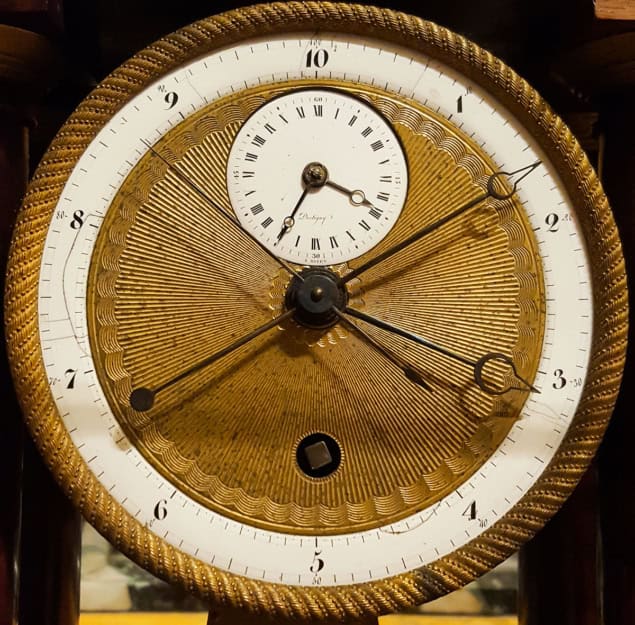Betty Barber reviews The Clockwork Conspiracy by Sam Sedgman

In an era where conspiracy theories run amok, this fictional thriller invites more than just the curiosity of its adolescent target audience. Written by the London-based author Sam Sedgman – a self-styled “nerd and enthusiastic ferroequinologist” – The Clockwork Conspiracy is a story about the potential impact of a new law to decimalize time in the UK. According to Miriam – one of the MPs in the novel – the law will “simplify the way we measure things [and] make the UK a leader in scientific research”.
The plan sounds innocuous enough: a day will be divided into 10 hours, each of 100 minutes, with each minute being 100 seconds. The proposed new law is not entirely in the realms of fiction – after all, decimal time was the legal standard in France during the French Revolution.
Before the bill is debated in parliament, however, renowned horologist Diggory disappears from the belfry at Big Ben. His son Isaac begins a quest to find his father, assisted by newly acquainted partner in crime, the rebellious Hattie.
As well as learning about the personalities of the protagonists, readers gain knowledge of topics they might otherwise know little about. Diggory, for example, elucidates the mechanics of clocks, Isaac provides insight into the sciences, and Hattie sheds light on how parliament works as she helps them get to the bottom of Diggory’s disappearance.
Thanks to her penchant for exploration, we are privy to the top-secret meeting of the Timekeepers – the group responsible for monitoring and protecting time – held at none other than the Royal Observatory, home of Greenwich Mean Time and the Prime Meridian. It’s an exciting adventure as our protagonists navigate London to overcome the plots’ obstacles.
To bolster the plausibility of decimal time as a threat to our everyday life, Sedgman refers to various significant historical events, including the suffragette movement, the introduction of the decimal pound in 1971 and the Millennium Bug. Timekeeper Penny explains the threat of the new law to the children: “Time is like water…it can be misused”.

The Swarm is coming: Tim Peake adventures into science fiction
The novel portrays different perspectives surrounding the bill in a nicely balanced way. These include the views of the Timekeepers (who disapprove of the bill), the Machinists (who rebel against it with vandalism) and the parliamentarians (who mysteriously support it). It’s an approach that lets readers appreciate the different views and rationale behind them.
The Clockwork Conspiracy uses fun facts to propel the plot and teach readers about time and the history of timekeeping, without potentially dry information being clumsily shoehorned in. Amid the suspense, the novel highlights the universal importance of friendship, family and personal integrity. Despite being aimed at children, it offers insight into the mechanics of society at large. It’s therefore a book that can be enjoyed by readers of any age.
- 2022 Bloomsbury Children’s Books £7.99/$15.60pb



